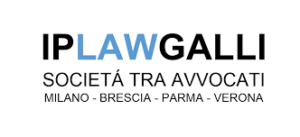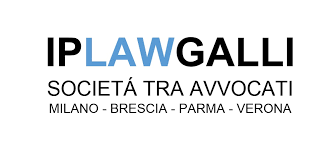
The Growing Relevance of Post-Published Evidence in Life Science Patents
Increasingly often in pharmaceutical and life science patent litigations in Europe there arises the problem of post-published evidence. This stems from multiple factors, starting with the complexity and duration of efficacy tests, often of a clinical nature, so that waiting for the outcome could fatally delay the filing of the patent application. Likewise, the increasing use of artificial intelligence in research also contributes, as it means that inventions are made more quickly and more than one research teams can get to them almost at the same time, so it is crucial to be the first to patent them.
Of course, as the case law of the EPO Board of Appeal clearly pointed out (see in particular T 578/06) “EPC requires no experimental proof for patentability and considered that the disclosure of experimental data or results in the application as filed and/or post-published evidence is not always required to establish that the claimed subject-matter solves the objective technical problem. This is in particular true in the absence of any formulated substantiated doubt. The board re-emphasised in this context however that this case law considers the establishment of plausibility only relevant when examining inventive step if the case in hand allows the substantiation of doubts about the suitability of the claimed invention to solve the technical problem addressed and when it is thus far from straightforward that the claimed invention solves the formulated problem”.
However in many cases pharmaceutical inventions consist of the discovery of new uses or new forms of administration of active ingredients that are already known as alternatives or more effective than those present in the state of the art and the inventive step involves overcoming and sometimes even overturning current ideas that these effects could not be achieved. In such cases, if the patent application is filed before the tests demonstrating these effects are made available, the possibility of using post-published evidence is often decisive in determining whether such inventions can be protected.
One such situation arose in a recent case on which the Company & IP Specialized Division of the Court of Milan also ruled (see Court of Milan, 15 July 2019), in which post-published evidence was used to identify the objective technical problem itself, since it showed that, as was stated (but not fully proven) in the patent application, the dosage regime claimed by it had a significant reducing effect in the severity and frequency of the side effects of the active ingredient administered. On the contrary, the claimants applying for the patent to be revoked attempted to have the objective technical problem solved by the patents in suit “downgraded” from that (i.e. the achievement of a dosage regime with greater tolerability compared to the standard regime), to the mere identification of an alternative to but not an improvement on the ones already hypothesised in the state of the art. That exactly because the description of the patent at issue did not contain experimental data which confirmed the technical effect of a reduction in the frequency and severity of side effects disclosed in the patent application (by describing a detailed protocol of clinical study to be followed for confirming said reduction), this achievement having been fully demonstrated by post-published studies only.
Post-Published Evidence in the Case Law of the EPO Board of Appeal
The Guidelines for Examination and the case law of the EPO are clear in stating that technical effects demonstrated by post-published evidence can (and rather must ) be taken into consideration in examining the question of inventive step, if such effects are plausible in the light of the patent description or are connected to, or implicit in, the technical problem identified in the description. Likewise the principles of law expressed by the case law of the EPO Board of Appeal, whereby post-published evidence can be taken into account only when on the basis of the content of the patent the technical effect is “plausible” (“According to decision T 1329/04, the verification of whether or not the claimed solution actually solves the problem, i.e. whether the claimed subject-matter actually provides the desired effect, must be based on the data in the application. Post-published evidence to support that the claimed subject-matter solves the problem to be solved is taken into account if it is already credible from the disclosure in the patent that the problem is indeed solved”: see EPO Case Law, I.D.4.6.).
This raises the problem of clearly distinguishing plausibility from obviousness, which, based on the could-would approach as set out in the Guidelines and Case Law of the EPO Board of Appeal, exists when “there is any teaching in the prior art as a whole that would (not simply could, but would) have prompted the skilled person, faced with the objective technical problem, to modify or adapt the closest prior art while taking account of that teaching, thereby arriving at something falling within the terms of the claims, and thus achieving what the invention achieves” (see EPO Guidelines, G.VII.5.3). Therefore, there is the risk of confusing concepts, stating that the assumed non-obviousness of the invention claimed in the patent would go against the possibility of considering post-published evidence, in that, if the claimed invention is not obvious then it is not plausible and vice versa when it is plausible, it comes that it is obvious too. However, in doing so two different and distinct concepts would be mixed up and overlapped, i.e. on the one hand, the concept of non-obviousness of the invention, as an effective solution to the technical problem, and, on the other, the mere plausibility of the hypothesis that the invention solves that problem.
However if the two concepts coincide, the post-published evidence by definition would never be relevant, because, if the invention were deemed obvious every time the hypothesis was plausible, then said evidence would count for nothing in the only case in which it would be admissible to make use of it. Instead, exactly the fact that EPO case law admits post-published evidence precisely in order to demonstrate the non-obviousness of an invention, that is however plausible based on the application, necessarily implies that the two concepts are different, as has been recently expressly acknowledged by the Italian case law too (see for example Court of Milan, Order, 15 July 2019, already quoted, which addressed the issue ex professo and stated that “The Court is aware that the two concepts are distinct, since the obvious/non-obvious parameter governs the assessment of inventive step of the invention while the plausibility parameter relates to proving the technical effect indicated in the patent (if the technical effect claimed in the patent is plausible, this enables us to also consider post-published evidence”).
It also needs to be stressed that there is a further relevant difference between the assessment of inventive step and the one of plausibility: non-obviousness is to be assessed in the light of the prior art only, while plausibility is to be assed in the light of both the content of the patent application and the prior art, that may supplement the former with further elements. Therefore, an invention, albeit not obvious in the light of the prior art, may be plausible, based on the same prior art and on the content of the patent application, that are both to be considered in this respect.
In other words, plausibility may well exist when there is an idea for a solution which, albeit not supported by pointers in the prior art (since otherwise the invention would be evident, i.e. it would lack inventive step, and therefore there would be no sense in debating the admissibility of post-published evidence), is however credible, the patent having to be interpreted in the light not only of its content but also of the common general knowledge which may be derived from the prior art, as the EPO case law states (“Common general knowledge at the priority date may be used to interpret the teaching in an application or a patent. Post-published evidence can only be used to back up the teaching derivable from the application”: T 716/08, in EPO Case Law). So much so that, for example, the decisions of the EPO Board of Appeal T 321/15 and T433/05 found an invention plausible in the light of common general knowledge and, at the same time, not obvious, again in light of the latter.
Post-Published Evidence and SPCs
The issue of post-published evidence may be, at least in theory, relevant also for SPC. A clue to this may even come from the very recent CJEU judgement of 25 July 2018 in the Gilead/Teva case (C-121/17), which clarified – from the point of view of the interpretation of point a) of Article 3 EC Regulation no. 3. 469/2009, but with a general conclusion on the limits to the possibility of granting SPCs in relation to the subject matter of the basic patent claims – that it is needed that “the product which is the subject of the SPC necessarily falls under the invention covered“ by the basic patent and that “To that end, it is necessary to ascertain whether a person skilled in the art can understand without any doubt, on the basis of their general knowledge and in the light of the description and drawings of the invention in the basic patent, that the product to which the claims of the basic patent relate is a specification required for the solution of the technical problem disclosed by that patent” (paragraphs 47-48). In fact this principle seems to imply that an SPC cannot be granted in relation to the subject-matter of a subordinate claim of a patent when the subject-matter of such a subordinate claim is not necessary to solve the objective technical problem which is the subject-matter of the patent, if for this purpose it already validly claims what is the subject-matter of the independent claims itself.
In this regard, in another recent case currently pending also in Italy, the patent owner has tried to refer to a new technical problem (i.e. the one of obtaining an alleged reinforcing effect through the combination of active ingredients claimed in a dependent claim), which was not found in the patent, either in terms of its mere enunciation, or in terms of the demonstration of such technical effect. In fact, according to the patent holder, reference should have been made to the “post filing experimental evidence”, i.e. obtained after the patent application was filed. That, however, would only be possible within the limits of what was also clarified by the CJEU in another very recent judgment, i.e. that of 30 April 2020, in case C-650/177, according to which a SPC cannot be granted with respect to an object that has been “developed after the filing date or priority date of the basic patent”, since “it would not refer to the search results claimed by the patent” (paragraphs 46-47).
This is fully consistent with the case law of the EPO Board of Appeal too, that clearly stated that “Post-published evidence may not serve as the sole basis to establish that the problem is solved” (EPO case law, quoting T 1329/04, T 415/11, T 1791/11 and T 488/16) and that it “can only be used to back up the teaching derivable from the application” (likewise EPO case law, quoting T 716/08 and T 578/06). That teaching needs to include the technical problem to be solved: in fact, according to Rule 42.1.c EPC sufficient disclosure of a patent requires, inter alia, that it “disclose(s) the invention, as claimed, in such terms that the technical problem, even if not expressly stated as such, and its solution can be understood, and state any advantageous effects of the invention with reference to the background art”. Otherwise there is no room for invoking post-published evidence, since in that case there is no teaching to be backed up.
by Professor Cesare Galli, IP Law Galli, Milan


